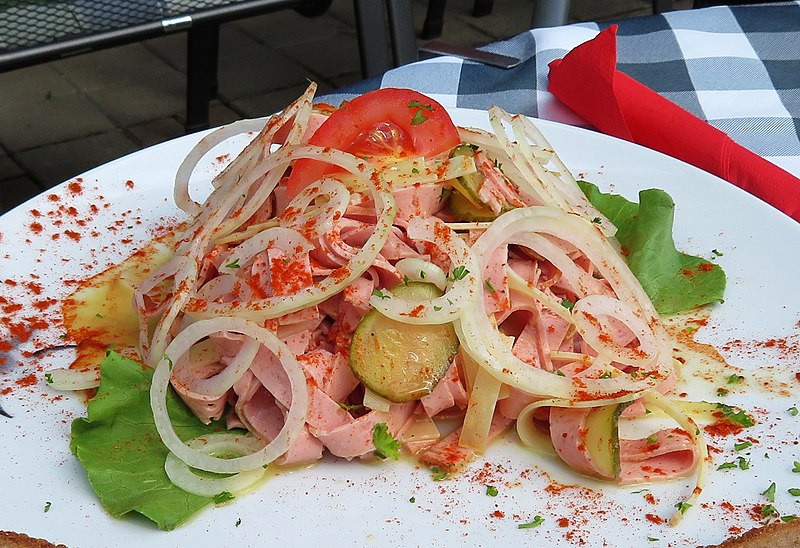Wurstsalat

Wurstsalat, a quintessential German dish hailing from the southern regions of the country, is a flavorful salad that brilliantly showcases Germany's affinity for sausages and inventive culinary traditions. This dish, whose name translates to "sausage salad," offers a delightful departure from the more common leafy greens and garden vegetables in typical salads, making it a favorite among lovers of hearty and savory fare.
At the heart of Wurstsalat is a combination of finely sliced sausages, usually Wiener or Frankfurter sausages, mingled with equally thin slices of onions, pickles, and sometimes cheese. These ingredients are carefully dressed with a tangy vinaigrette made from vinegar, oil, and a medley of seasonings. The result is a vibrant and satisfying dish that harmonizes the robust flavors of sausages with the zing of pickles and the refreshing crunch of onions.
The origins of Wurstsalat can be traced to the Swabian region in southwestern Germany, where it gained popularity in the mid-19th century. Over time, variations of this salad have emerged, incorporating local ingredients and preferences. However, the fundamental appeal remains consistent: a hearty, delicious, and easy-to-prepare dish that embodies the essence of German comfort food.
Wurstsalat can be enjoyed as a main course or a hearty side dish, typically accompanied by a fresh baguette or crusty bread. Its savory and slightly tangy character, along with the satisfying presence of sausages, makes it a beloved classic in German cuisine, offering a flavorful alternative to the more traditional green-based salads.












